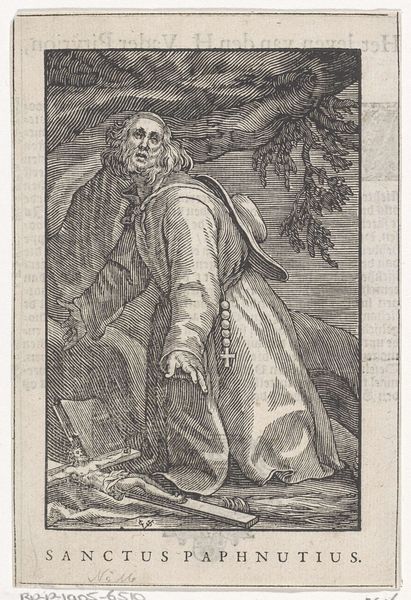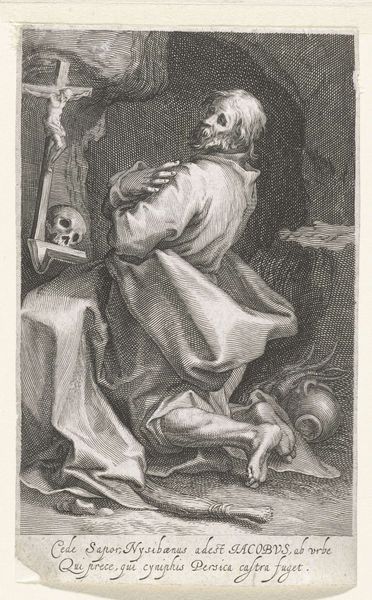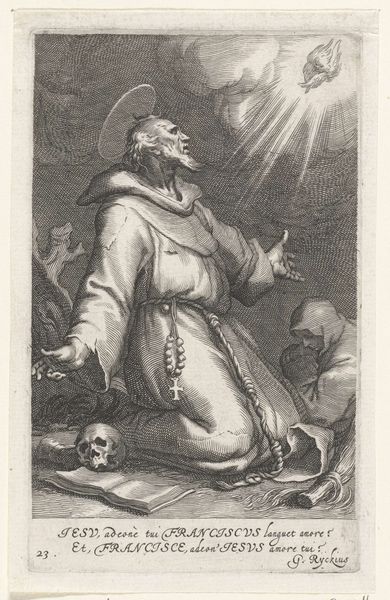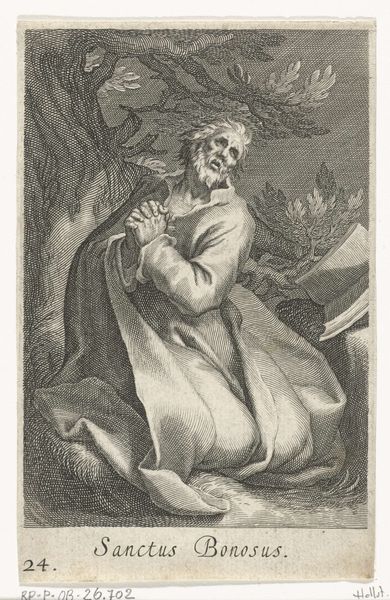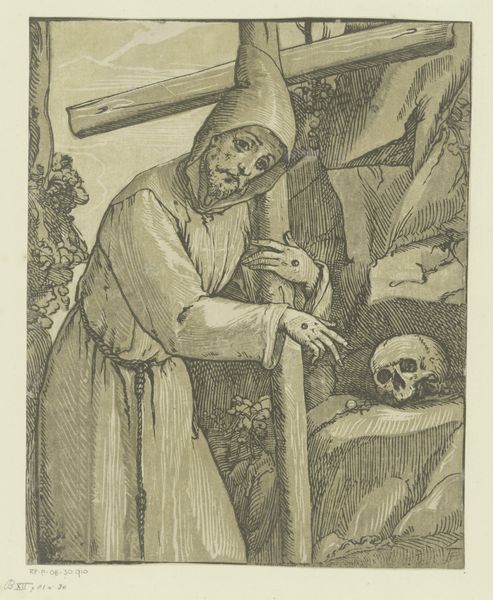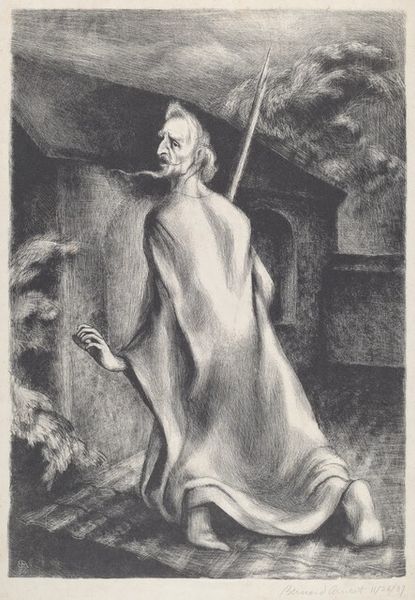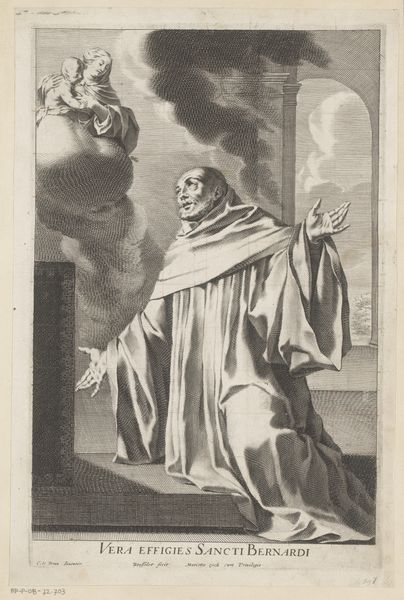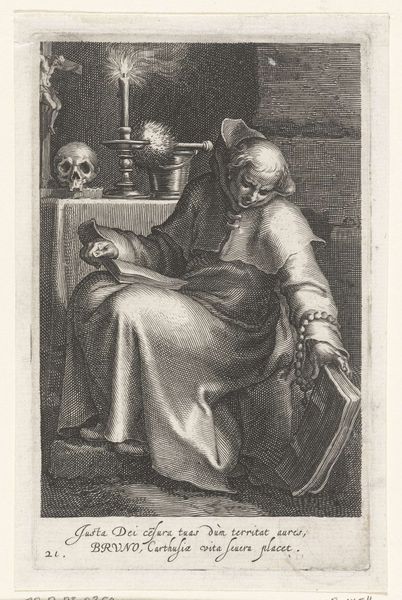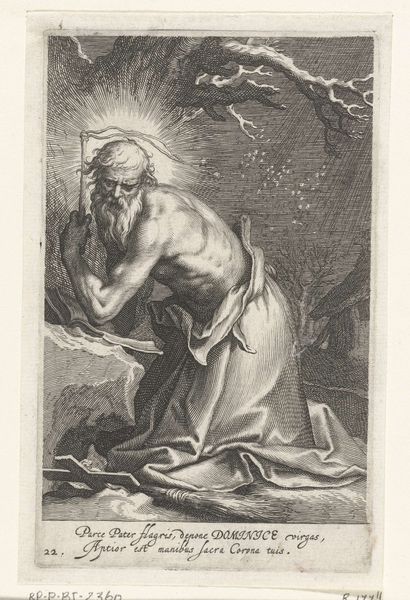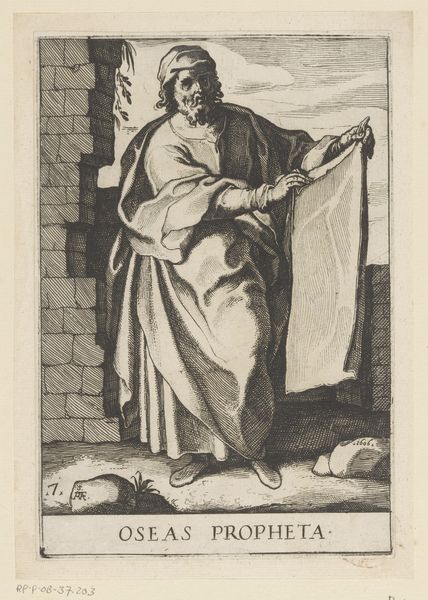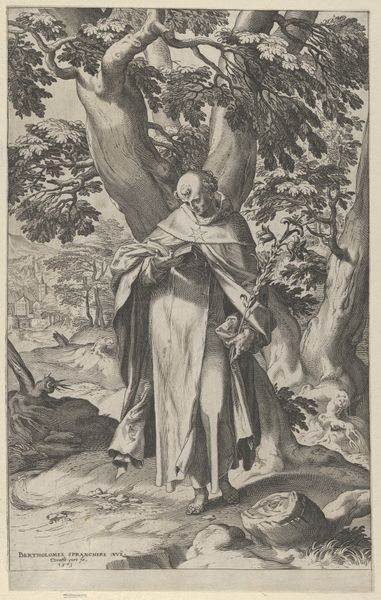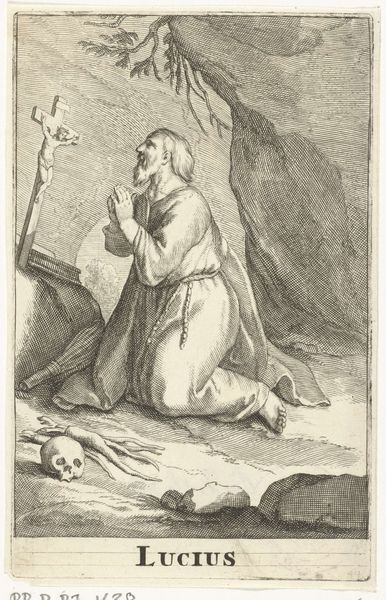
engraving
#
portrait
#
baroque
#
old engraving style
#
history-painting
#
engraving
Dimensions: height 148 mm, width 90 mm
Copyright: Rijks Museum: Open Domain
Curator: Before us hangs "Saint Onuphrius the Great as a Hermit", an engraving created sometime between 1590 and 1612 by Boëtius Adamsz. Bolswert, currently residing here at the Rijksmuseum. Editor: Immediately, I’m drawn to the contrasting textures rendered by the engraving technique, like the sharp lines forming a stark tonal gradient from a nearly white foreground figure to the shaded wilderness behind him. Curator: Yes, Bolswert certainly captured the drama common to Baroque art of that period. Notice how the narrative supports a time of heightened religious and political conflicts as expressed across art production during the counter-reformation. Onuphrius represents devotion within the wild frontier of faith. Editor: Indeed. The textures, which can seem contradictory—stone, the softness of fabric—coalesce into a convincing representation, all with gradations achieved from black ink upon a white substrate. Curator: Right, Onuphrius as a subject was becoming newly important; engravings like these gained circulation throughout Europe, reinforcing ideal models of piety within monastic communities but equally across middle class houses. Editor: Observe his kneeling posture, in devotional service alongside the symbolic presence of the crucifix. What might otherwise seem grotesque, an unkempt body exposed in nature, finds resolution as it connects to the ideals of purification in service to a higher purpose. Curator: The choice to portray him nearly nude certainly emphasizes his detachment from earthly concerns and embraces his deep connection to God. That isolation makes it easy to see how these kinds of images might appeal to individuals but to broad political projects during that period. Editor: His physical form appears almost skeletal; his humanity is, therefore, at odds with the divine nature of such a posture, but not beyond visual reconciliation. The figure gives the tonal range its grounding. Curator: That is so. These prints are often considered affordable and were widely distributed across different social strata. It also provided ways for religious orders to further disseminate their teachings. I appreciate Bolswert's strategic rendering that allows him to promote certain models of religious practice. Editor: It's an intriguing fusion of contrasts: refined detail against a broader composition that’s about suffering, nature and revelation. This encourages a certain kind of beholding that merges suffering with grace through its highly contrasted aesthetic means.
Comments
No comments
Be the first to comment and join the conversation on the ultimate creative platform.
